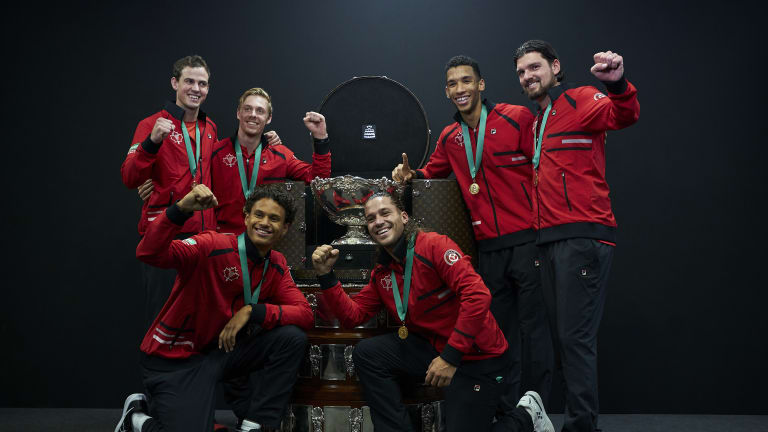The Business of Tennis
With implosion of Kosmos’ reimagined event, the Davis Cup runs dry
By Jan 16, 2023The Business of Tennis
University of Virginia men’s tennis team secures permanent 'in perpetuity' funding
By Apr 13, 2025The Business of Tennis
Charleston Open will pay women same as men starting in 2026
By Apr 06, 2025The Business of Tennis
Top ATP, WTA players pen letter to Grand Slams seeking greater share of revenue
By Apr 04, 2025The Business of Tennis
Chairman Andrea Gaudenzi will take over as interim ATP CEO after Massimo Calvelli departs
By Apr 04, 2025The Business of Tennis
Novak Djokovic, Coco Gauff and other players ask Grand Slam tournaments for more money and more say
By Apr 03, 2025The Business of Tennis
Wimbledon plans to upgrade the fans' favorite hill for 150th anniversary
By Apr 03, 2025The Business of Tennis
Tennis star Coco Gauff launches own management firm
By Apr 03, 2025The Business of Tennis
Carlos Alcaraz doesn't support the lawsuit from tennis players' group Novak Djokovic founded
By Mar 19, 2025The Business of Tennis
Why did Novak Djokovic's players' association sue the groups that run tennis, and what do they want?
By Mar 19, 2025The Business of Tennis
With implosion of Kosmos’ reimagined event, the Davis Cup runs dry
While the historic international competition has not been pronounced dead, it may be in its last throes. (In its place? The United Cup.)
Published Jan 16, 2023
Advertising
Advertising

Canada is the Davis Cup champion, but where the competition goes from here is anyone's guess.
© Getty Images